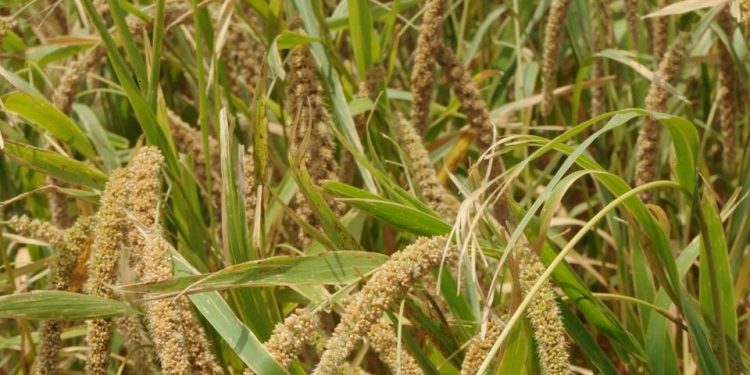Nayagarh: About 22 years ago, millet was grown aplenty in tribal dominated pockets of Nayagarh district. Millet was their staple food. However, over years, the crop began to disappear in most pockets.
Now, the traditional crop has got a new lease of life courtesy Millet Mission of the state government. The Mission has tasted success in 18 tribal dominated villages under Dasapalla block. The cereal has returned to the menu of the tribals.
With the government pushing millet farming, the traditional crop has provided scope of earning for them.
Reports said, apart from paddy, millet was grown aplenty in various parts of the district about two decades ago. During floods, cyclones and droughts, paddy could not meet the food requirement of people in the district. Millet used to meet their requirements during crisis.
It was said that as poor people were provided with subsidized rice, the latter gradually shunned millet farming in tribal areas. Finally, it was stopped. Instead, many people took up eggplants cultivation.
Now, after millets vanished from the menu, tribals suffered malnutrition.
Owing to awareness about millet farming, they realized the nutritional value of millets. Now, millet farming has spread for last two years at Barpali, Satajhari, Gothasahi and Andharkota in Sariganda panchayat; Gambharikola, Jamusahi, Raisara, Bidapaja and Jhunkamara in Laxmipur panchayat; Kadalibari, Siligadi, Champadai, Khajuridihi, Khalisahi, Khandadhara, Janisahi and Raimada in Ghungudipada panchayat. Millets have replaced eggplant farming in these villages.
Brahmani Behera, a resident of Raisara, said an organistation encouraged tribals to take up millet farming. Meetings were held in villages. The tribals are now preparing various cakes and jau with millets.
“People are keen to take up millet farming. It has a good market. But we are not able to cultivate millets in a big way. Many people come to our village to buy millets.
Ranjan Mallick of Gambharikhola, said that millet does not require as much water as needed by paddy. Besides, it does not require fertilisers, he added.
The Millet Mission is meant to augment the income of farmers and meet the nutritional needs of people.
Notably, the mission aims to fulfill the nutritional needs of women, expectant mothers and kids so as to fight malnutrition.
The mission is vigorously pushed by the women and child welfare department and the agriculture department in tribal areas.
In tribal areas as well, the crop used to be cultivated on a large scale many years ago, but lack of marketing impacted its cultivation. Now, the focus is to revive small crops for income generation of tribals. The crop gets the much-needed attention across the state because of its high nutritional value.
PNN







































